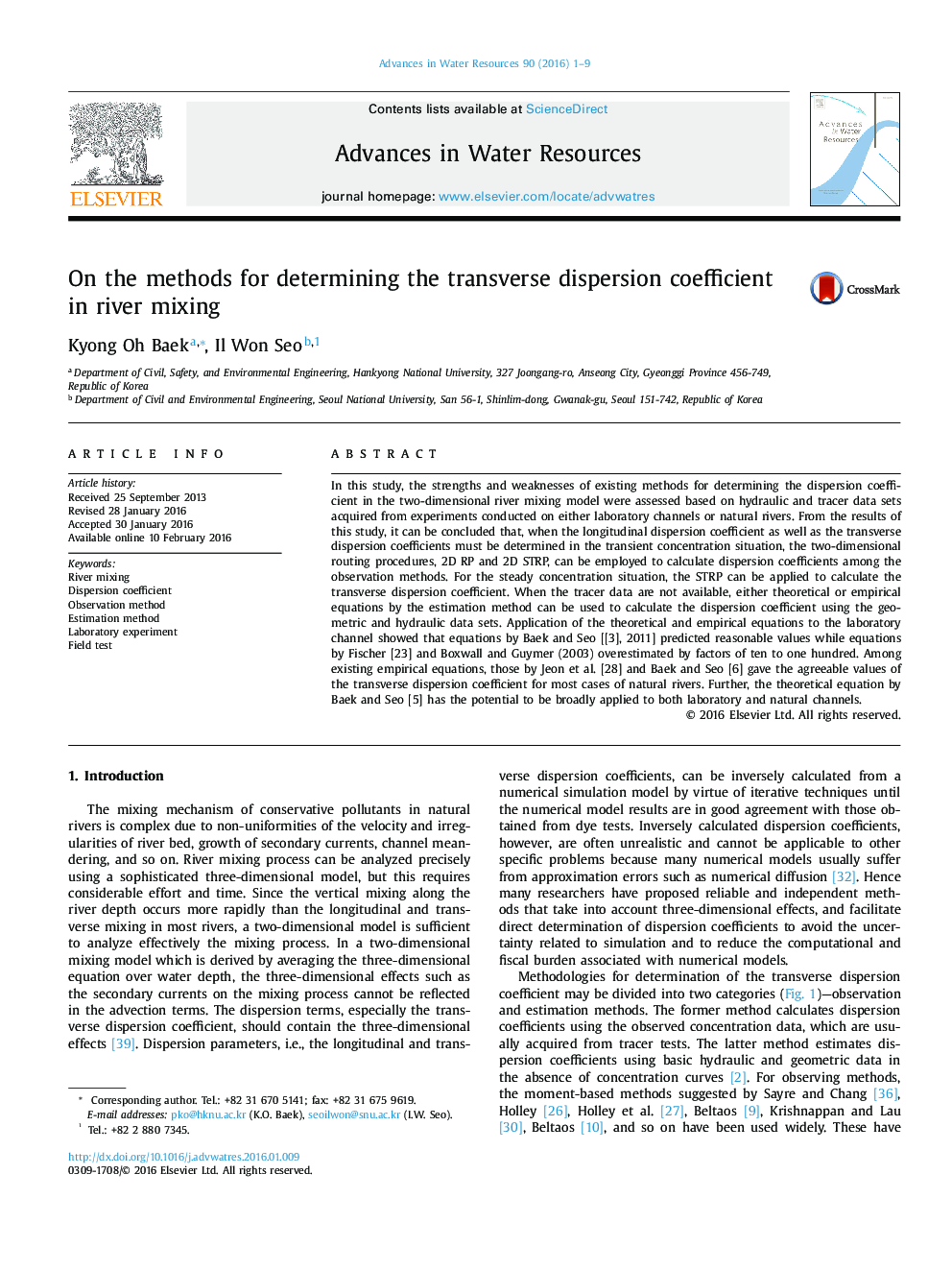| Article ID | Journal | Published Year | Pages | File Type |
|---|---|---|---|---|
| 6380689 | Advances in Water Resources | 2016 | 9 Pages |
Abstract
In this study, the strengths and weaknesses of existing methods for determining the dispersion coefficient in the two-dimensional river mixing model were assessed based on hydraulic and tracer data sets acquired from experiments conducted on either laboratory channels or natural rivers. From the results of this study, it can be concluded that, when the longitudinal dispersion coefficient as well as the transverse dispersion coefficients must be determined in the transient concentration situation, the two-dimensional routing procedures, 2D RP and 2D STRP, can be employed to calculate dispersion coefficients among the observation methods. For the steady concentration situation, the STRP can be applied to calculate the transverse dispersion coefficient. When the tracer data are not available, either theoretical or empirical equations by the estimation method can be used to calculate the dispersion coefficient using the geometric and hydraulic data sets. Application of the theoretical and empirical equations to the laboratory channel showed that equations by Baek and Seo [[3], 2011] predicted reasonable values while equations by Fischer [23] and Boxwall and Guymer (2003) overestimated by factors of ten to one hundred. Among existing empirical equations, those by Jeon et al. [28] and Baek and Seo [6] gave the agreeable values of the transverse dispersion coefficient for most cases of natural rivers. Further, the theoretical equation by Baek and Seo [5] has the potential to be broadly applied to both laboratory and natural channels.
Related Topics
Physical Sciences and Engineering
Earth and Planetary Sciences
Earth-Surface Processes
Authors
Kyong Oh Baek, Il Won Seo,
